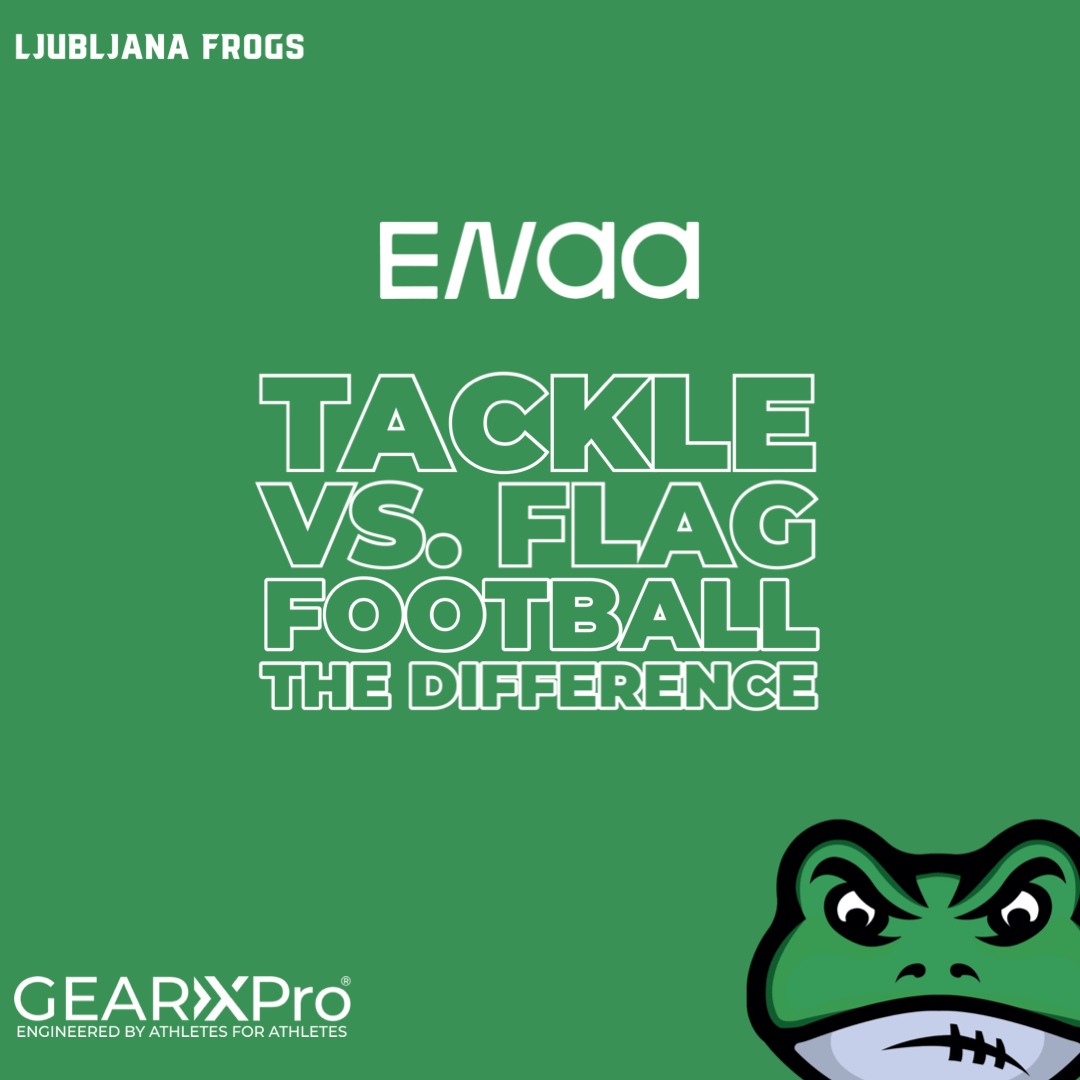
Title: Flag Football vs. Tackle Football: A Closer Look at the Differences
Football, in its various forms, captivates fans worldwide with its high-energy gameplay and strategic maneuvers. One popular sports variant is flag football, a non-contact version that offers a thrilling experience without the physicality of traditional tackle football. In this blog post, we will delve into the nuances of flag football and explore the critical distinctions between flag football's 5-on-5 format and American football's tackle version. We'll also touch upon aspects such as field size, play clock, and the number of participants in each variation.
What is Flag Football?
Flag football is a modified version of American football where players wear flags or belts with attached flags around their waists. Instead of tackling opponents to the ground, defenders aim to remove these flags to halt the ball carrier's progress. The objective remains: scoring touchdowns by advancing the ball into the opponent's end zone. However, the absence of physical contact in flag football emphasizes agility, evasion, and strategic flag-pulling techniques.

What are the differences between Tackle Football and Flag Football 5-on-5?
The primary distinction between tackle football and flag football 5-on-5 lies in the game's physicality. In tackle football, players employ tackles to bring opponents down to the ground, showcasing their strength and aggression. Flag football, on the other hand, emphasizes speed, footwork, and maneuverability. Removing an opponent's flag requires precise timing, technique, and agility, contributing to the game's strategic and finesse-driven nature. This means he is perfectly safe as a sport for your kids!
Field Size:
While field dimensions vary, flag football fields are typically smaller than traditional American football fields. A standard five-on-5 flag football field (IFAF Rules) ranges 70 yards (64m) in length and 25 yards (23m) in width. The smaller field size allows for faster-paced gameplay and creates more open spaces for players to exploit. While the tackle field is 100 yards (90m) long and 53 yards (49m) in width.
Play Clock:
The play clock refers to a team's allotted time to start a play. In tackle football, the play clock typically lasts 40 seconds in the professional league (NFL) and 25 seconds in college football. In flag football, the play clock is 25 seconds, depending on the specific league or organization. The slightly shorter play clock in flag football promotes a fast-paced and dynamic style of play. NFL is played 4x15 minutes per game. In flag football, five on 5 is 2x20 minutes.

Number of Participants:
Flag football often features smaller team sizes compared to tackle football. The 5-on-5 format is a common variant wherein each team has five players on the field. However, other configurations, such as 4-on-4 or 7-on-7, are also played in different leagues. In contrast, tackle football is typically played with 11 players on each side at professional and college levels. However, team sizes may vary in youth and recreational leagues to accommodate different age groups and organizational rules.
Conclusion:
Flag football offers a thrilling alternative to traditional tackle football, showcasing the sport's essence without physical contact. The absence of tackling in flag football transforms the game into a showcase of agility, evasion, and precise flag-pulling techniques. With smaller field sizes, shorter play clocks, and reduced team sizes, flag football brings a unique flavor to the sport while maintaining the core objective of scoring touchdowns.
Whether you're drawn to the power of tackle football or the finesse of flag football, both variations provide exhilarating experiences for athletes and fans alike. So, grab your flags or shoulder pads and revel in the excitement of football, whichever version you embrace. Flag football is on a fast pace to become an Olympic sport in Los Angeles in 2028!
So that’s a perfect opportunity to start and train with the most organized club in Europe, Ljubljana Frogs.


